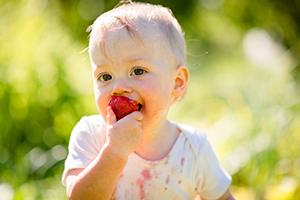Digestion is the process of breaking food down so that nutrients can be absorbed by cells. In your stomach, food is churned and mixed with acid and enzymes. It is then pushed into the first part of the small intestine, where most digestion and absorption takes place.
消化是食物分解,营养物质被细胞吸收的过程。在胃里,食物和胃酸、酶搅拌混合。然后混合物被小肠的第一部分,大部分的消化和吸收发生在这里。
To aid absorption, it is mixed with bile, which is produced by the liver and discharged from the gallbladder through ducts. Digested food molecules pass into blood vessels in the walls of the intestine and are carried up through the portal vein into the liver for further processing and storage. The liver is usually a rich red color, but excess lipids stored in its cells can change it to a whitish color. This is known as fatty liver disease.
为了帮助吸收,混合物和胆汁混合。胆汁由肝脏产生,从胆囊经过导管释放出来。消化好的食物分子进入肠壁的血管,然后通过门静脉运送到肝进行进一步的加工、储存。肝脏通常充满红色,但是存储在肝细胞内的脂肪可以使它的颜色变白。这就是脂肪肝。

It is closely associated with obesity, particularly central obesity involving the omentum—a fatty pad that hangs down from the stomach. Eating too much fat can cause it to push out, producing a large waistline. In some people, eating certain foods can irritate the walls of the small intestine and disrupt regular movement, resulting in altered bowel habits or irritable bowel.
脂肪肝跟肥胖有密切关系,尤其是包含网膜的向心性肥胖——网膜是从胃部垂下来的脂肪垫。吃太多的脂肪可以导致这个脂肪垫突出,增大腰围线。对一些人来说,吃某些食物可以刺激小肠壁,扰乱小肠的规律蠕动,造成排便习惯异常或者肠应激。
Almost all nutrients have been absorbed by the time digested food leaves the small intestine and enters the colon, where water and salt are extracted leaving solid wastes for elimination.
当食物离开小肠进入结肠时几乎所有的营养物质已经被吸收了。在结肠中水和盐被重吸收,固体粪便形成并排出。












